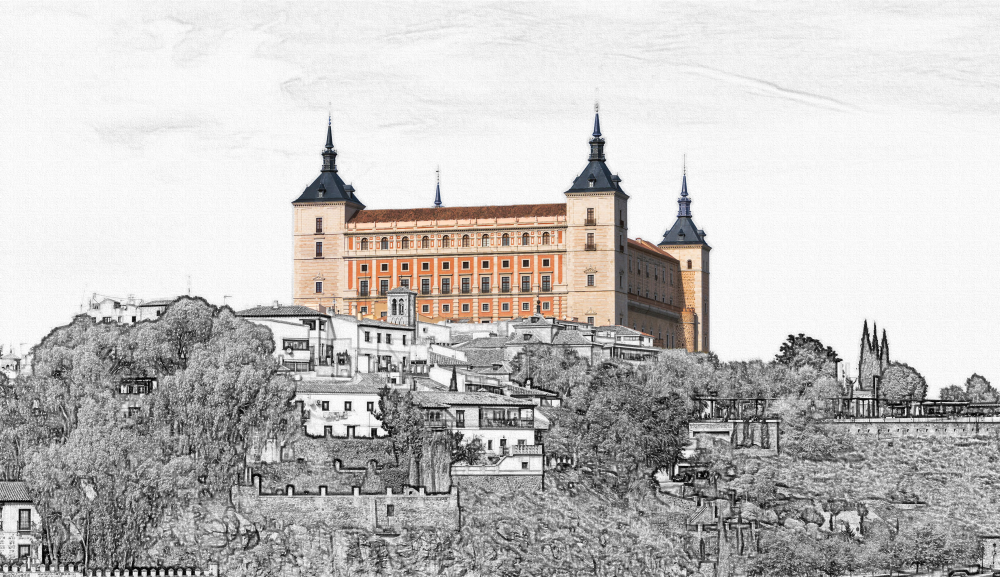The Alcázar of Toledo
You are in the Alcázar of Toledo. We recommend that now, or after leaving the building, contemplate its imposing facades from the outside.
The Alcázar has its origins in a fortress built in the highest part of the city, which Romans, Visigoths and Muslims used as the residence of their leaders. Its name comes from the Arabs, who called it "Al Qasar" (literally, "the fortress"). Later, the Christian kings carried out numerous reforms in the building, but it was Carlos I, who in the 16th century, converted it into a large Renaissance palace, thanks to the work of architects Alonso de Covarrubias, Francisco de Villalpando and Juan of Herrera.
The Alcázar is a large quadrangular construction of 60 meters on each side, framed by four large towers 60 meters high, each crowned by a slate spire. It is entirely carved in stone, except for the panels of the south facade, which are made of brick. Inside, there is a central patio with colonnaded galleries to form two floors.
Since its construction, the Alcázar underwent several fires, which almost completely destroyed it both during the War of Independence and during the Spanish Civil War.
Reconstruction was completed for the last time in 1960, and now, the Alcázar currently houses a section of the Army Museum, and on its upper floor, the Regional Library of Castilla-La Mancha.
More information: https://cultura.castillalamancha.es/patrimonio/catalogo-patrimonio-cultural/alcazar-de-toledo
Galería multimedia
-
The Alcázar of Toledo




